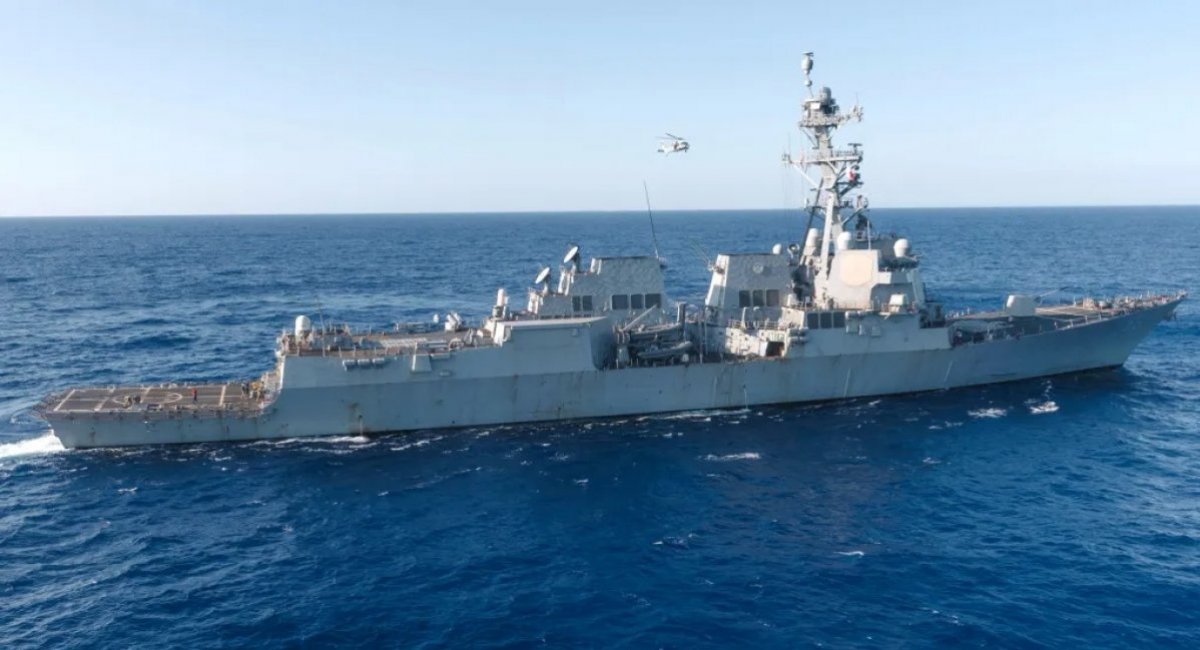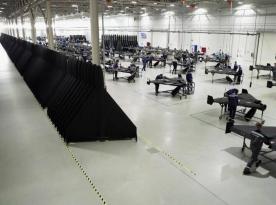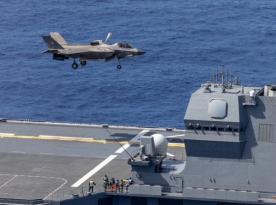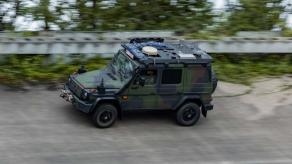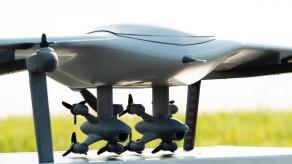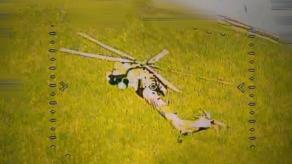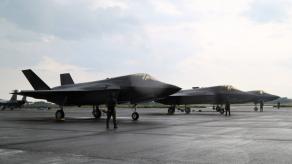Recently, new photographs emerged online showing the Arleigh Burke–class USS Bainbridge and USS Winston S. Churchill destroyers, both part of the Gerald R. Ford Carrier Strike Group. In these images, observers noticed an interesting new launcher installed on board.
It is most likely a launcher for rocket-powered interceptor drones, as earlier this year the U.S. Navy announced plans for destroyers in this strike group to receive either the Coyote or Roadrunner-M type, The War Zone reports. Judging by the launcher’s shape and design, it is most probably intended for launching Coyote Block 2, which resembles missiles more than traditional drones.
Read more: UAE to Produce US-Made Coyote Jet-Powered Anti-Aircraft Drones
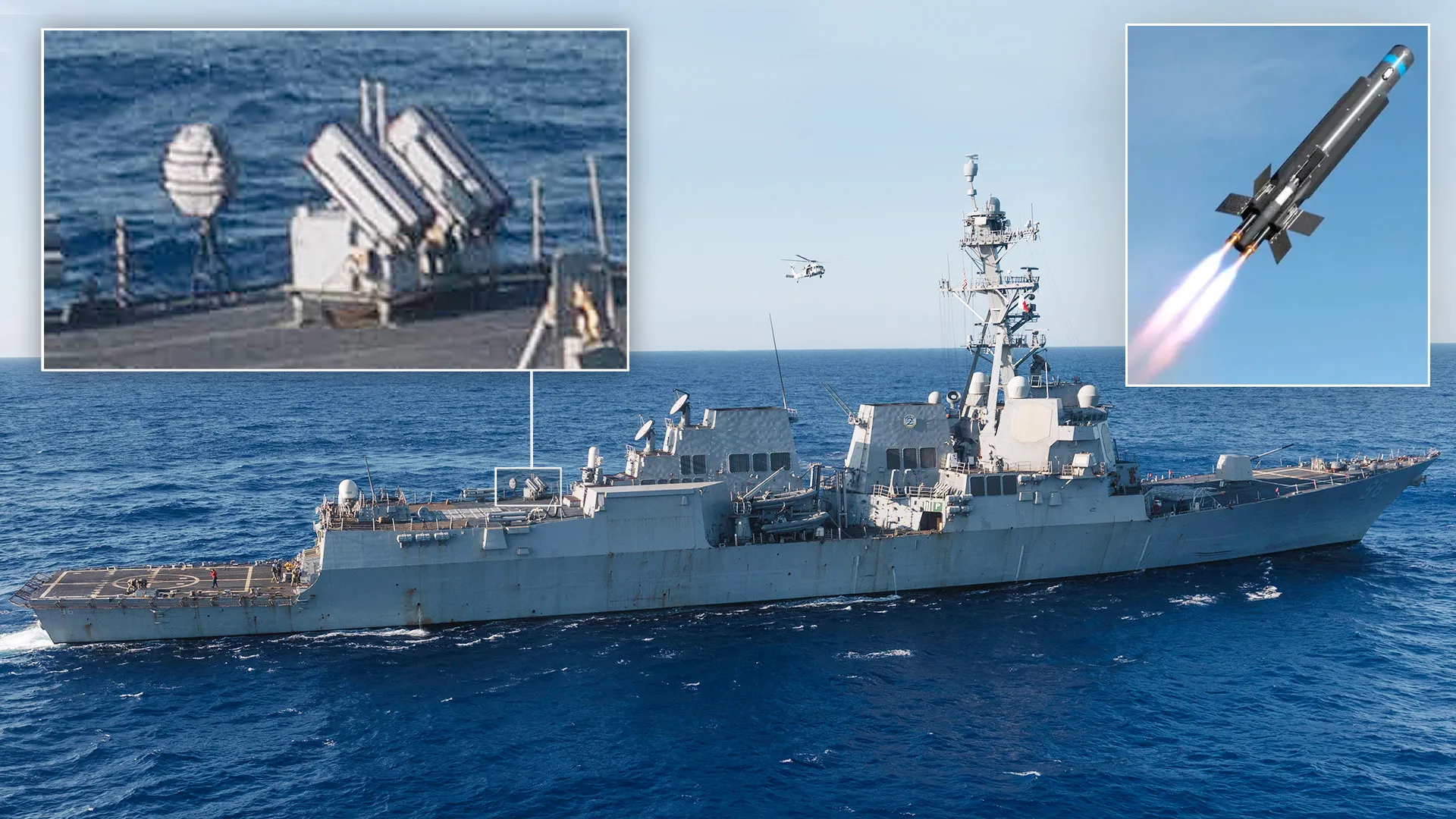
The photos show two such launchers, each capable of holding up to four interceptors — giving a total loadout of eight. This is clearly insufficient to repel a large-scale drone swarm attack. Defense Express notes that these appear to be only trial installations, so more launchers — possibly in different configurations for varied mission profiles — could be added in the future.
The Coyote Block 2 is a single-use anti-air drone equipped with a solid-propellant booster for launch and a jet engine for sustained flight to its target. It is designed primarily to engage aerial drones. However, in the Block 2 configuration, it can be fitted with various payloads for other missions, such as reconnaissance, electronic warfare, surveillance, and target acquisition, in addition to its primary role — interception.
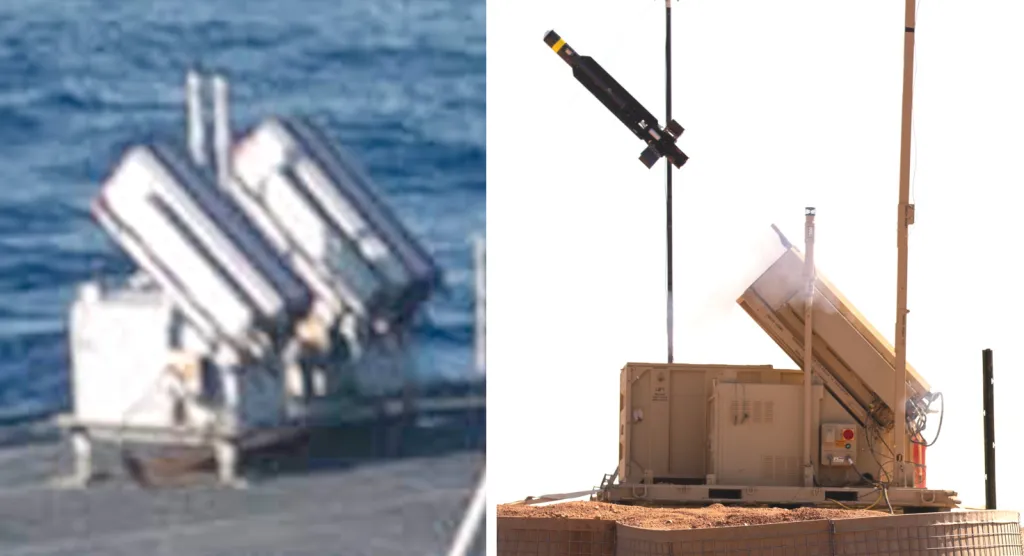
In the ground-based variant, target detection relies on various radars, and the Coyote system includes all the same elements as a short-range air defense system: launchers, control stations, and radar units. On the destroyers, however, only the launchers are visible — suggesting that the Coyote Block 2 is either already fully integrated with the ship’s existing systems or is currently undergoing integration.

While there have been no official reports of the Coyote UAS being capable of striking surface or ground targets, its modular payload system makes such capability plausible, or at least feasible in the near future. This would be highly relevant today, as defending warships from small, inexpensive naval drones is becoming increasingly urgent.
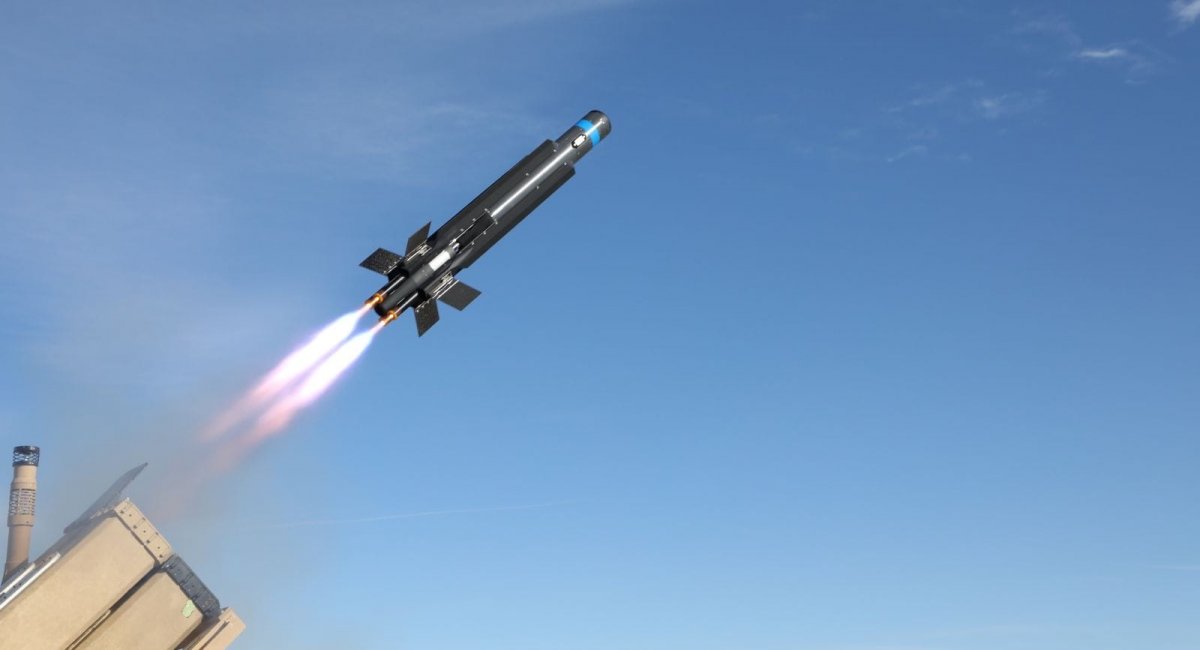
In that role, the Coyote Block 2 could serve as a versatile, cost-effective defense solution against low-flying UAVs, naval unmanned systems, and even certain ground targets. Its price is relatively modest compared to other interceptors: while its current cost is unknown, the U.S. Army previously ordered 600 Coyote 2C units at $125,000 each. By contrast, the likely alternative for engaging drones at a range of around 10 km — the RIM-162 ESSM surface-to-air missile — costs approximately $1.65 million per shot.

Given the growing proliferation and mass deployment of drones — especially in the Middle East, where U.S. warships frequently operate — the Coyote Block 2 appears to be an attractive and practical solution for modern naval defense.
Read more: U.S. Navy Eyes Coyote and Roadrunner Interceptors Deployed on Destroyers as the Solution to Houthi Drones




